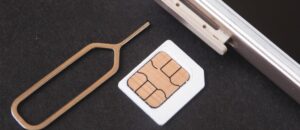The Role of SIM Cards in Enhancing IoT Connectivity Across Industries
The Internet of Things (IoT) is exploding, creating a universe of connected devices that collect, transmit, and analyze data. From smart factories to connected farms, the possibilities seem limitless. But at the core of this revolution lies a hidden hero: the IoT SIM card.
What is an IoT SIM card? The IoT SIM card is specifically designed to empower seamless communication in the world of machine-to-machine (M2M) interaction. In this guide, we’ll discover how these specialized SIM cards enhance IoT connectivity and revolutionize industries!
Role of a SIM card in IoT
These aren’t your typical smartphone SIM cards. Designed specifically for machine-to-machine (M2M) communication, IoT SIM cards prioritize data transfer, boasting features like:
- Durability: Built tough for harsh environments, withstanding extreme temperatures, vibrations, and even corrosion (perfect for industrial settings).
- Security: Enhanced security protocols safeguard sensitive data transmission between devices and the cloud (critical for protecting sensitive information).
- Flexibility: Designed for low power consumption and optimized data usage, ideal for battery-powered devices (essential for long-lasting deployments).
- Global Connectivity: Supports multiple cellular networks and roaming capabilities, enabling seamless operation across vast distances (a must-have for global businesses).
By providing secure and reliable connectivity, IoT SIM cards are transforming industries, paving the way for a more connected and efficient future.
What kind of IoT SIM cards are available?
There are three main types of SIM cards used in IoT applications, each with its strengths:
- Traditional SIM cards: These familiar plastic cards are a cost-effective solution for simple deployments (great for prototyping or low-maintenance applications).
- Embedded SIM (eSIM): Soldered directly onto the device’s circuit board, eSIM cards are tamper-proof and ideal for miniature devices with limited space (perfect for wearables or trackers).
- Multi-IMSI (Integrated Mobile Subscriber Identity) cards: These advanced SIMs can store and switch between multiple IMSIs, allowing for dynamic network selection and flexible connectivity options (ideal for complex deployments with roaming needs).
Different applications require different features, and the type of SIM card you choose can significantly impact your project’s success.
How are IoT SIM cards transforming industries?
By providing secure and reliable connectivity, IoT SIM cards are unlocking the true potential of IoT across various sectors:
- Manufacturing: Real-time sensor data from factory floors optimizes production, predicts maintenance needs, and tracks equipment for efficient utilization.
- Logistics & Supply Chain: GPS-enabled devices with IoT SIM cards track goods, optimize delivery routes, and ensure timely arrivals. Inventory management becomes streamlined with real-time data on stock levels and location.
- Smart Cities: Connected traffic lights adjust based on real-time traffic, while smart parking and waste management systems create a more efficient urban environment.
- Agriculture: IoT sensors monitor soil conditions, allowing for precision agriculture techniques that optimize water usage, fertilizer application, and pest control, leading to increased yields and reduced environmental impact.
- Energy Management: Smart grids with IoT-enabled devices enable two-way communication, optimizing energy usage, reducing peak demand, and improving grid efficiency.
This is just a glimpse into the transformative power of IoT SIM cards. From revolutionizing agriculture with precision monitoring to optimizing energy usage in smart grids, the impact is undeniable.
The Future of IoT Connectivity with SIM Cards
The future of IoT connectivity is bright, and virtual SIM cards are poised to evolve alongside it. We can expect advancements in:
- Security: Enhanced encryption and authentication for even more secure data transmission in a connected world.
- Low Power Wide Area Networks (LPWAN): SIM cards supporting LPWAN technologies like LoRaWAN and NB-IoT will enable long-range communication for remote devices with extended battery life.
- Network Slicing: This technology allows for creating virtual networks within existing cellular infrastructure, catering to the specific needs of different IoT applications.
By harnessing the power of specialized IoT SIM cards, businesses across industries can unlock the transformative potential of the Internet of Things. As technology continues to advance, we can expect even more innovative applications and a future where seamless connectivity empowers a truly connected world.





0 Comments